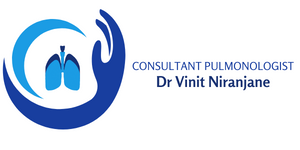Blog
Breathing Easier: Understanding ICD and Thoracocentesis for Lung Conditions
For instance, you are now technically able to assume that a sheath that surrounds every single lung is slimy and slippery. Actually, that is called pleural space and this is actually a very important part of your breathing mechanism. It’s made of two layers: Otherwise, it would involve the innermost layer attached to the lining of the lung and the outermost layer on the lining of the chest wall.
A small part of this space is taken by the fluid and it is mostly of help in the motion of the lungs relative to the chest wall during the respiratory process. Nevertheless, not always it is as smooth as it, and other conditions appear which complicate the process even further. Pleural space is the space between the parietal pleura and the visceral pleura within the thoracic cavity and if filled with air or fluid handicaps the lungs or respiration:

- Pneumothorax also known as Collapsed Lung
Air leaks into the pleural space, causing the lung to partially or completely collapse. - Pleural Effusion
Excess fluid builds up, restricting lung expansion.
Symptoms That Signal Trouble
Both pneumothorax and pleural effusion can cause:
- Sharp chest pain: Often sudden and stabbing, worsening with breathing or coughing.
- Shortness of breath: This can range from mild discomfort to severe difficulty breathing.
- Rapid, shallow breathing: The body’s attempt to compensate for reduced lung capacity.
- Dry cough
- The feeling of chest tightness: Like a band constricting your chest.
- Cyanosis (severe cases): Bluish skin discoloration due to lack of oxygen (especially with pneumothorax).
When Do We Use ICD and Thoracocentesis?
It is so fortunate that there are methods such as intercostal chest drainage and thoracocentesis for dealing with ailments, but now we have to determine the appropriate occasions for their application.
What Is Pneumothorax?
- Primary: Occurs in individuals with no underlying lung disease, often due to ruptured air pockets (blebs) on the lung surface.
- Secondary: Develop in those with existing lung conditions like COPD or chronic lung infections.
- Tension: A life-threatening emergency where air continues to enter the pleural space but cannot escape, collapsing the lung entirely and compressing vital organs.
Collapsed Lung Symptoms
Affected patients will present with all the above symptoms upon developing a collapsed lung. Still, if the person is suffering from tension pneumothorax, they will start breathing abnormally, have a bluish skin coloration, and hence the need to seek immediate medical assistance.
Thoracocentesis
To deal with tension pneumothorax, thoracocentesis is an important step to take. Therefore, someone needs to insert a needle into the interpleural puncture site for him/her to evacuate the trapped air hence making the lung re-inflate. This is one of the faster methods that can be life-saving
Pleural Effusion:
Pleural effusion can develop due to various underlying conditions, including:
- Heart failure: Fluid can back up into the lungs and pleural space.
- Infection: Pneumonia or other lung infections can cause fluid buildup.
- Pulmonary embolism: A blood clot in a lung artery can damage lung tissue and lead to effusion.
- Autoimmune diseases: Conditions like lupus can affect the pleura and cause fluid accumulation.
- Cancer: Cancerous tumors in the lungs or pleura can also cause pleural effusion.
ICD: Draining Excess Fluid for Relief
Intercostal chest drainage (ICD) might be required for large pleural effusions or those causing symptoms. Through the chest wall into the pleural space, a thin plastic tube (chest tube) is inserted. With this setup, you can continuously drain excess fluid which will help in relieving pressure from the lungs and promote better breathing.
Experienced Medical Professionals are Vital
It is essential to note that only experienced medical practitioners should carry out the procedures of ICD or thoracocentesis and also take every necessary precaution to reduce any potential harm.
Conclusion:
To cure illnesses such as pneumothorax or pleural effusion inside the lungs, minimally invasive procedures like ICD and thoracocentesis play an immense role. These techniques help the respiratory system function better by releasing air that was trapped or removing extra liquid hence this allows good breathing and reduces pain overall. Supposing one has signs that seem like those of collapsed lung or pleural effusion then they need to see a doctor immediately because it can be fatal. If diagnosed early these conditions may respond well to treatment with ICD and thoracocentesis thus significantly enhancing recovery.
Feel free to ask me anything relating to lung illnesses. Dr.Vinit Niranjane is a chest specialist committed to making sure people breathe freely, Schedule a meeting with him today so that you can talk about your lung problems and also discover some of the best remedies for them.
Contact Dr. Vinit Niranjane:
Email: info@localhost
Phone: +91 77758 77039
